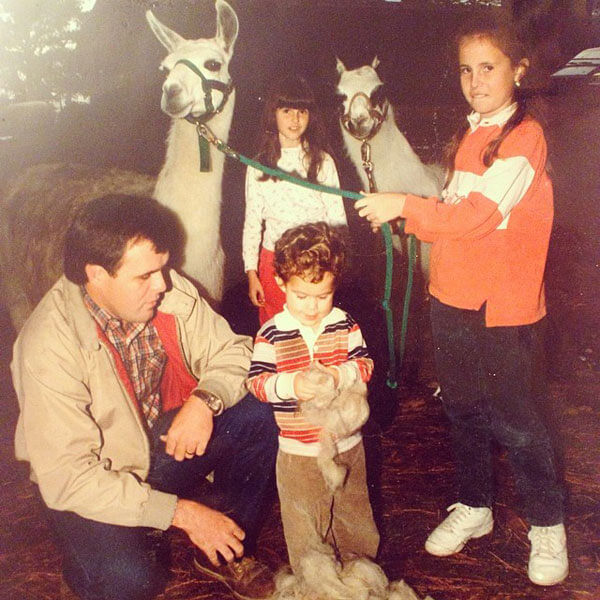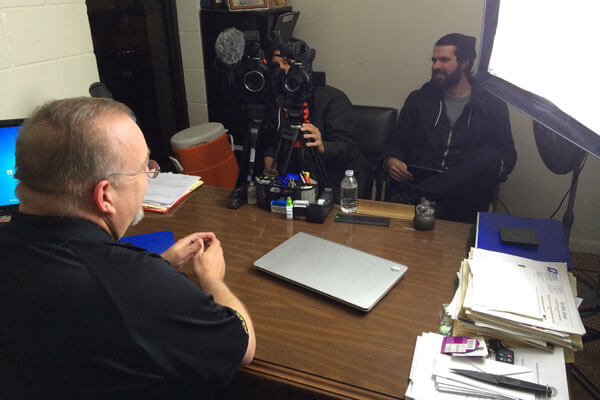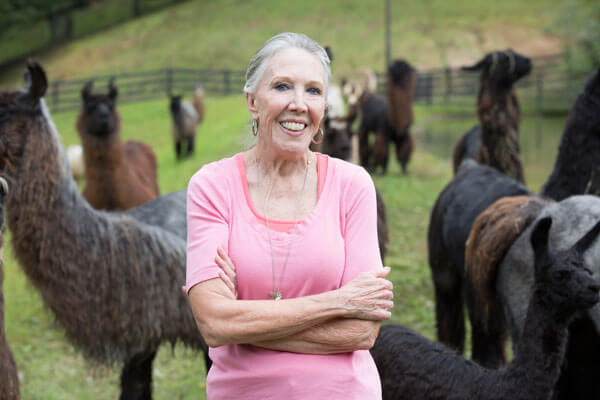To get at the heart of our nation's love for llamas, Tanner Shinnick traveled the country making "Llama Nation: The Documentary."

Shinnick’s father, Ron Shinnick, has around 20 llamas, but does not like to reveal the exact count, a superstition that perfectly captures the quirkiness of llama owners (a demographic that is thriving in Cohutta thanks to the elder Shinnick). At the moment, the town sheriff has about six llamas, and the county judge also has a few.
Naturally, the younger Shinnick, 28, was brought up surrounded by llamas, caring for them and even competing in shows. Yes, llama shows. These events may sound like an excuse to gather together a bunch of adorable animals, in reality, they are demanding – similar to dog or horse shows and no less serious. They involve obstacle courses and jumping led by a handler, and the animals all need to be shiny and fluffed.
Despite his upbringing, these shows did not go well for Shinnick. “I was absolutely terrible at it,” he says. “I think the best I ever did was eighth place.”

Tanner Shinnick grew up surrounded by llamas. His dad, Ron Shinnick (left) is an expert at llama carting.
Perhaps it was the lack of blue ribbons or just his love of film, but Shinnick left Cohutta in 2010 to attend the film program at Brigham Young University-Idaho. He now works as a commercial cinematographer in Salt Lake City, Utah, where he lives with his wife and no llamas.
In 2014, when Shinnick set out to direct his first film, he knew where to find his subjects.
Bolstered by nearly $17,000 raised on Kickstarter, Shinnick started work on a feature-length documentary exploring the uncommon existence of people – like his father – who are obsessed with llamas. He ended up visiting 15 states over the course of a year.
On his odyssey through llama country, Shinnick encountered people and communities with long histories of breeding, trekking, carting, and showing llamas, who were in no way influenced by the animals’ sudden pop-culture popularity. “They have this weird knack and love for this animal that you don’t have for other animals,” Shinnick says. “It’s kind of like a crazy cat lady but with, like, 100 llamas.”
“Llama Nation: The Documentary“ will debut on the American film festival circuit in 2016 and be available to stream next summer. The film was submitted to major festivals, including Sundance, Tribeca, and South by Southwest.
It features a diverse lineup of llamas and their owners, but its main storyline follows two teens – Janessa Hall of Dobson, North Carolina, and Hunter Snow of Monroe, Georgia – who are competing against each other for a championship title with the Alpaca Llama Show Association.
While we won’t spoil the outcome, it’s safe to say that both teens, though friendly toward one another, competed hard for the title, each employing their own approach to showing. Snow has more than 10 llamas she rotates through. Hall, however, has a go-to llama, Pongo, that she trained from a young age. “She has a huge bond with this animal,” Shinnick says.
Then there’s Shinnick’s supporting cast: In Portland, he followed Rojo, a popular therapy llama who wears costumes while greeting the elderly. “He’s a celebrity [in Portland],” Shinnick says. “Whenever we went out to film, random people just knew about Rojo. Portland’s kind of the perfect city for that. Llamas are a little bit weird, and Portland’s a little bit weird.”
Shinnick also spent a lot of time filming back in his home state. There in Georgia, he found more subjects featured in the documentary, including a woman he calls the “godmother of llama showing,” Tracy Pearson. She owns Pearson Pond Ranch and Llama Co. in Ellijay, home to nearly 200 show-quality llamas.
Pearson knows the history of llamas in the United States inside and out, Shinnick says. She can tell you about how, in the 1990s llamas sold for thousands each – up to $100,000 – until the bubble burst, so the speak. Now llamas can sell for as little as $100.
Pearson’s ranch is just an hour from Cohutta, where Shinnick returned to capture his father carting llamas (think horse and buggy, minus the horse). Ron Shinnick is well regarded in the llama world, and a minor player in the documentary. He’s known as the Llama Carting King, according to his son, having self-published a how-to guide on the subject that sold 3,000 copies.
Even though Tanner Shinnick doesn’t see himself ever again owning camelids, he can easily sum up their appeal and what he hopes will make people watch his film: “They’re just kind of awkward looking,” he says, “and funny and cool all at the same time. You can’t look at a llama and not have a smile on your face.”
You can view the film’s trailer below:



